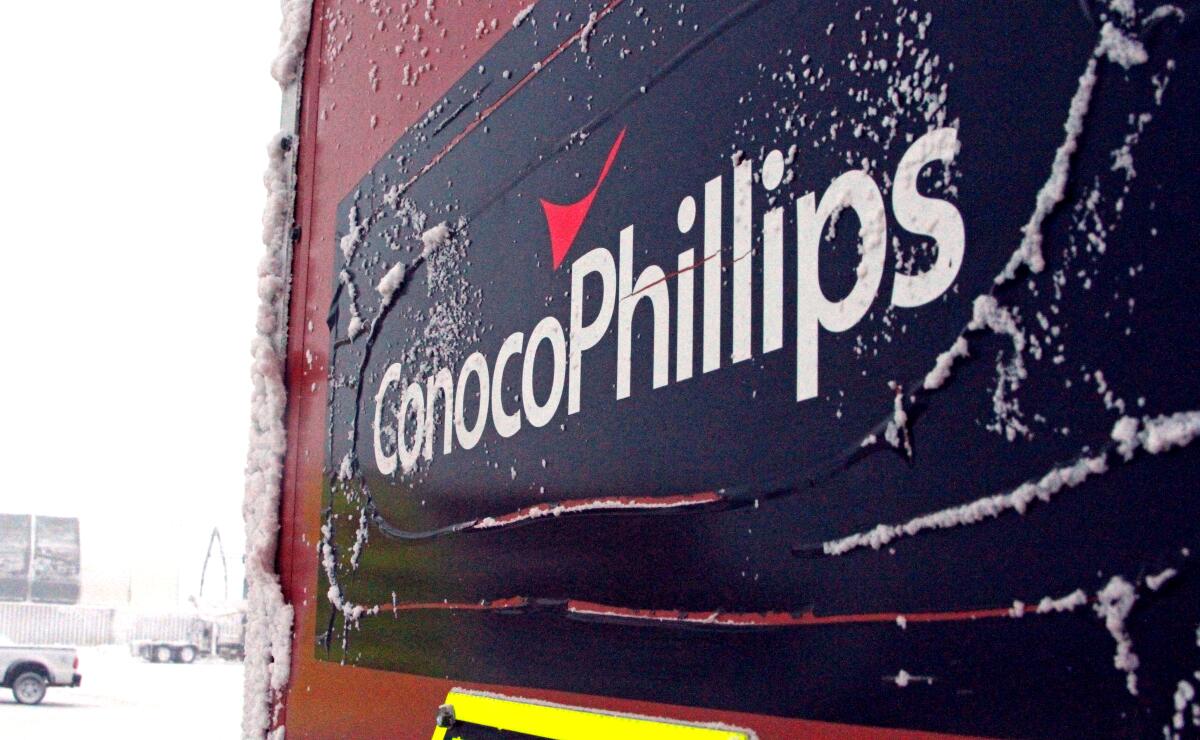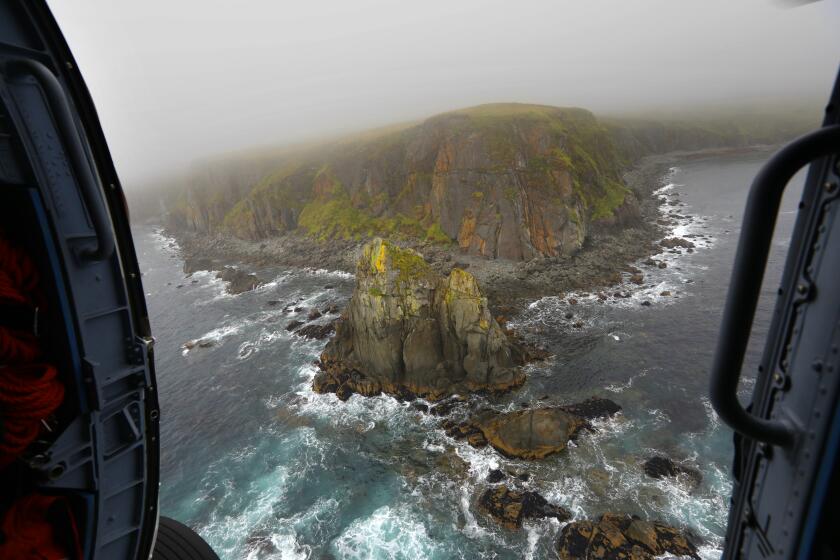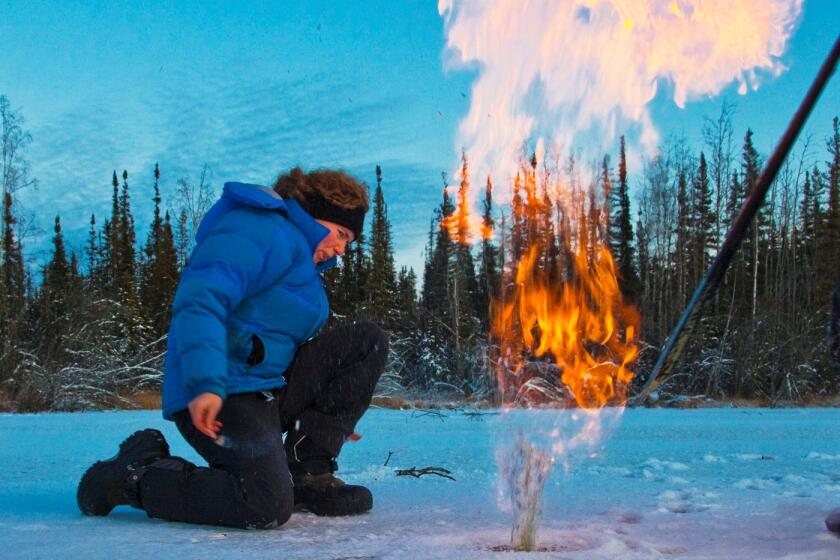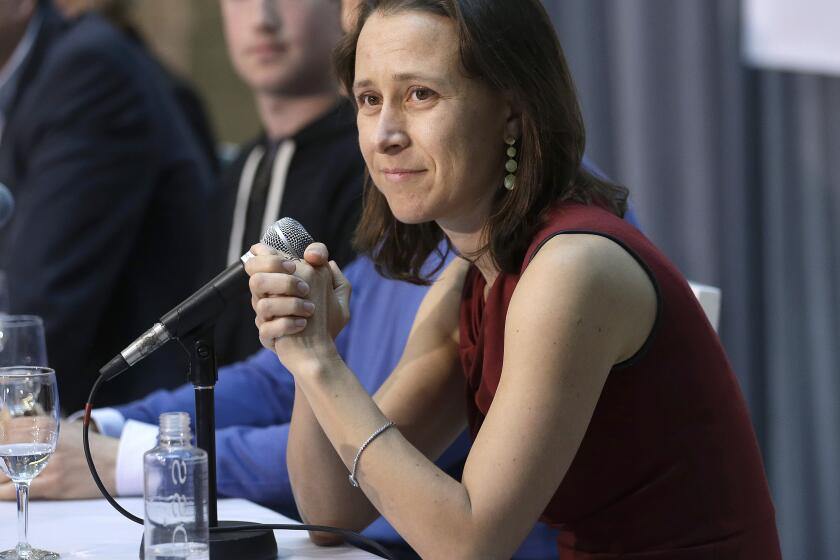Op-Ed: Wait, what? The Biden administration wants to drill on Alaska’s North Slope?

- Share via
The bitter end of the fossil fuel era is playing out in one of the world’s wildest remaining places: Alaska’s North Slope. And it’s not pretty.
On Friday, the Interior Department released a draft supplemental environmental impact statement on the Willow project, an oil development on Alaska’s North Slope that Interior says would release as much as 284 million metric tons of carbon dioxide over its 30-year lifetime, and perhaps more. The Biden administration seems to be leaning toward permitting this carbon bomb, which would mock its campaign commitments to ease off on new oil leases — and in fact would represent a continuation of Trump-era efforts to drill big in the far northern tundra.
Trump, you may recall, made drilling in Alaska’s Arctic National Wildlife Refuge a priority. But after a fierce campaign by Gwich’in Natives and environmentalists, no big oil companies were willing to bid for leases on that land. Perhaps they were beginning to see the writing on the wall: With the cost of renewables plummeting, it no longer made sense to go to the ends of the world in search of more hydrocarbons.
But Alaska’s congressional delegation — especially Republican Sen. Lisa Murkowski — never gave up on expanding oil development. She’s moved her efforts a couple of hundred miles west to what would be a massive extraction: ConocoPhillips’s Willow project, near the village of Nuiqsut and in the National Petroleum Reserve.
Scientists are seeing changes off Alaska that have never been documented before, as warming upsets a vast ecosystem and one of the world’s vital fisheries.
This time Murkowski appears to have team Biden in her corner, even though the development plan has all the usual horrors: a Texas-based corporation turning Northern Alaska into another industrial sacrifice zone, jeopardizing Indigenous food security (particularly by threatening the Teshekpuk caribou herd), surrounding the people of Nuiqsut with light, noise and chemical pollution, and of course, locking in decades of fossil fuel extraction when scientists tell us we must be doing precisely the opposite. Willow is the biggest oil and gas project pending on U.S. public lands, and that’s using the Biden administration’s estimate of what it would produce, about 600 million barrels of crude oil. Privately, according to the Washington Post, ConocoPhillips is telling investors that its new Arctic “hub” could eventually unlock five times as much: 3 billion barrels.
Though ConocoPhillips may use this year’s high gas prices or the energy disruptions caused by the Ukraine war to push the project, those are just industry talking points. By the time the project comes online, modelers are predicting 33% of vehicle sales will be electric. And the current round of climate crises will only be growing. Already more of Alaska has burned so far this year than at this point in time in the last 80 years.
Local officials, including native communities, are split: Oil always means money, even if a lot of it goes out of state. But scientists are not split: The International Energy Agency said last year that if we had any hope of meeting the targets the world set in Paris in 2015, there could be no further expansion of fossil fuel infrastructure.
On his very first day in office, Biden rejoined those accords; in Glasgow last year for the follow-up U.N. conference he talked about our “overwhelming obligations” to the poorer countries decimated by climate change. But that’s ink on paper and words through microphones. There’s nothing abstract about the hundreds of millions of barrels of oil that the Willow project would produce, nor the guaranteed rise in temperature.
Take it from a permafrost scientist who takes her kids on research expeditions: There’s a way to talk to children about global warming that encourages inquiry rather than despair.
You know who can see that future coming? ConocoPhillips. To sustain hundreds of miles of new ice roads and pipelines proposed for the project, ConocoPhillips may have to artificially chill the melting tundra.
Read that again: They could artificially freeze the melting soil in order to extract more petroleum, which, when it burns, will raise the temperature even higher. If you want a snapshot of our insanity, this is it.
The administration’s environmental impact statement says that it prefers development but it does include another option: “no action.” If we want to adopt that plan — if we want, that is, to leave the carbon in the ground where it can do no damage — we have to let the administration know.
The Interior Department is taking comments on its Willow project environmental impact statement for 45 days. Here’s what to tell officials: Donald Trump wanted to drill Alaska until science and common sense put a crimp in his plans. Why on (a heating) Earth would we want to start it up again?
Zach Brown is a climate scientist in his native Gustavus, Alaska, where he is co-director of the Tidelines Institute. Author and climate activist Bill McKibben is founder of 350.org and Third Act, which organizes Americans over 60 for progressive change.
More to Read
A cure for the common opinion
Get thought-provoking perspectives with our weekly newsletter.
You may occasionally receive promotional content from the Los Angeles Times.












